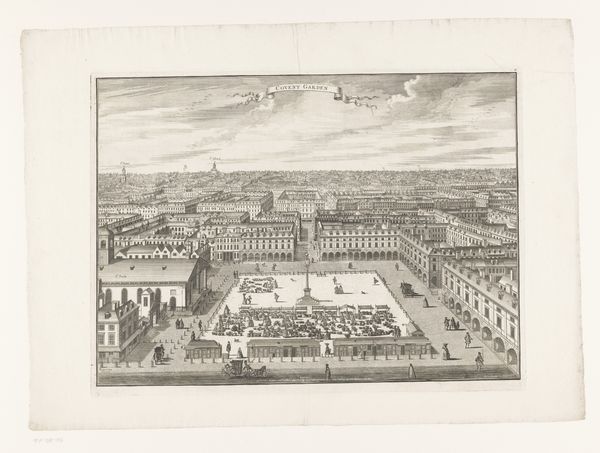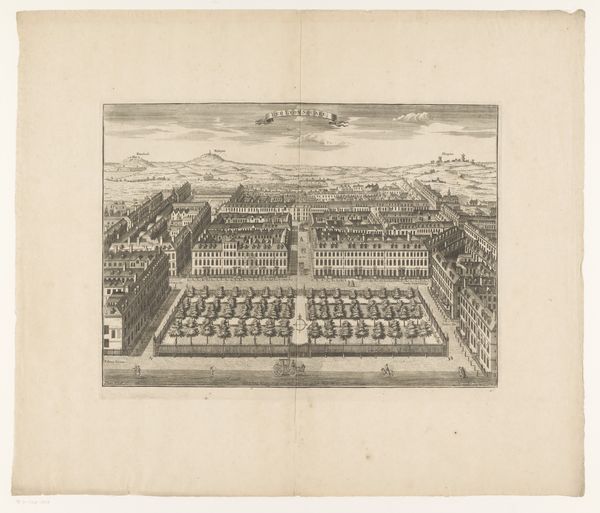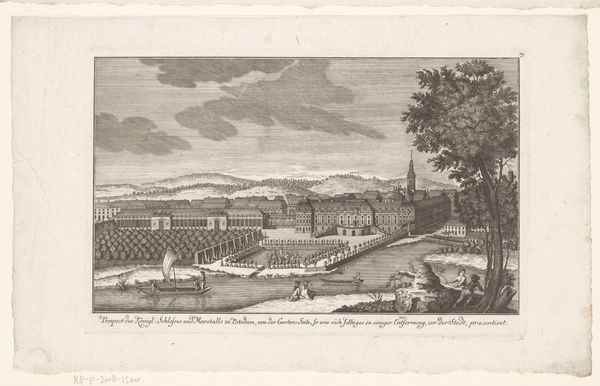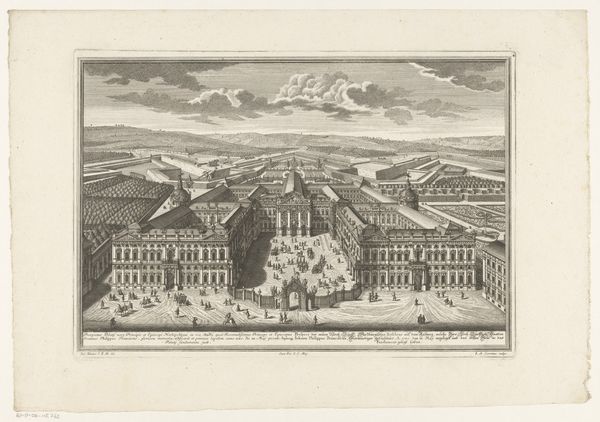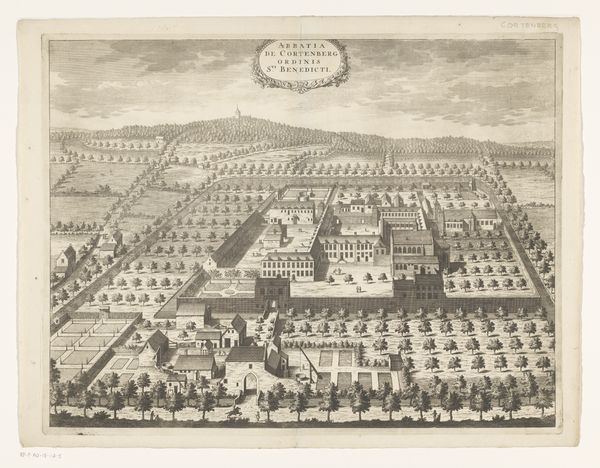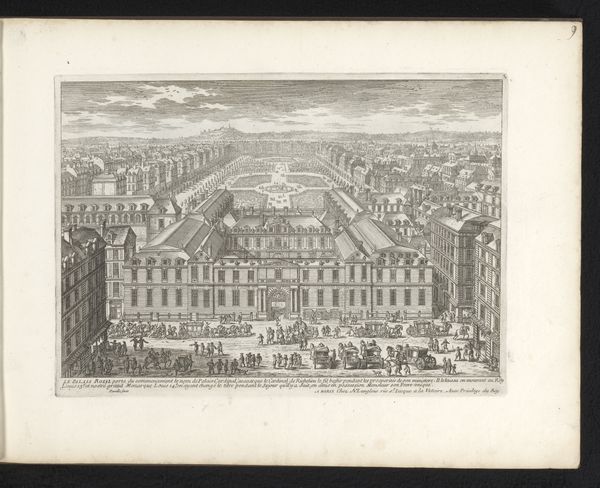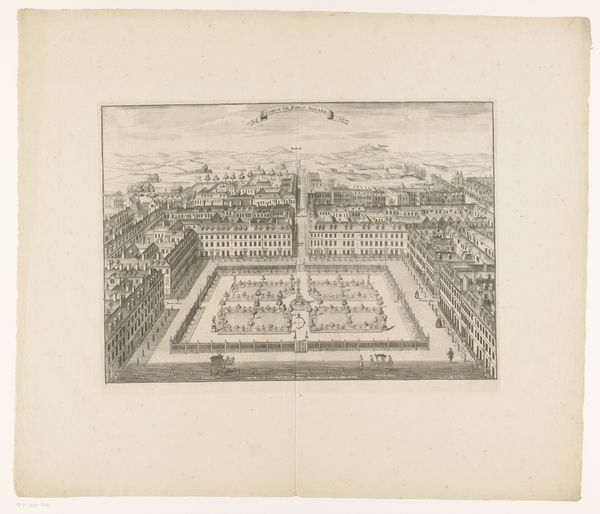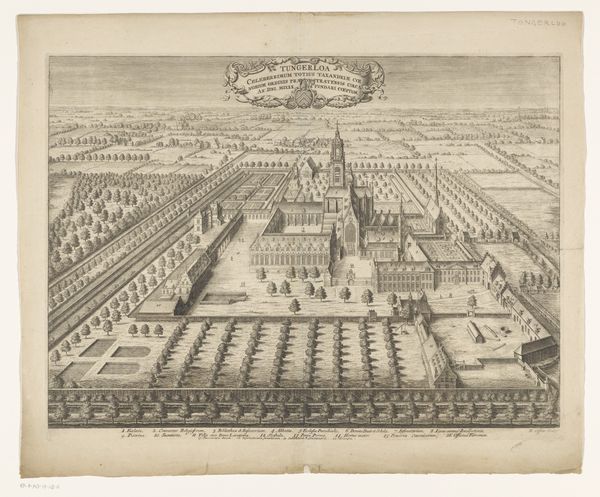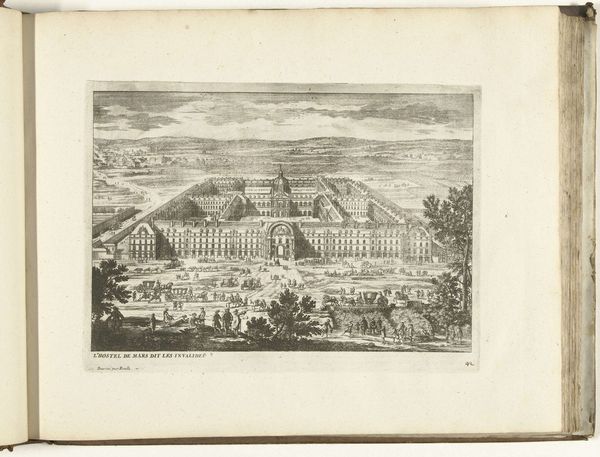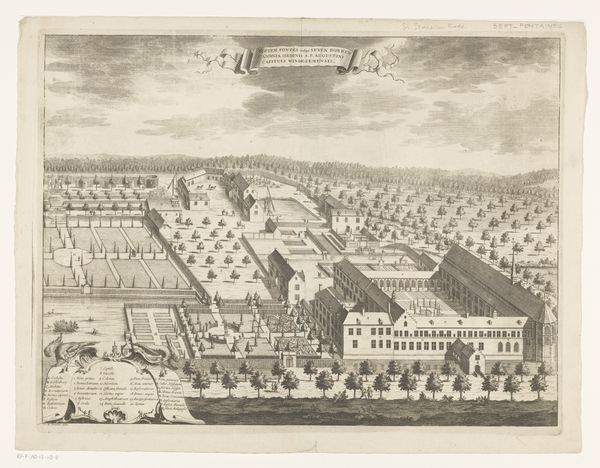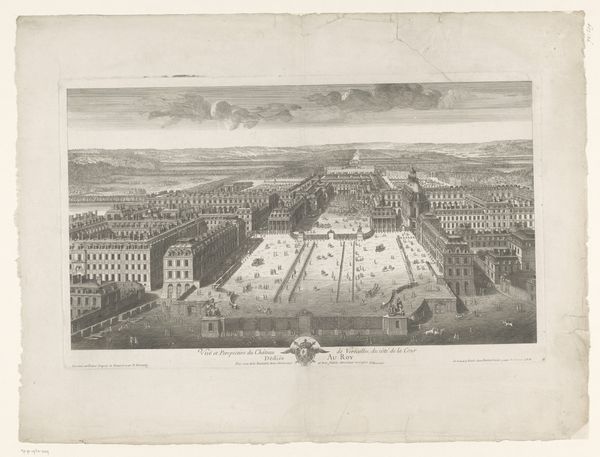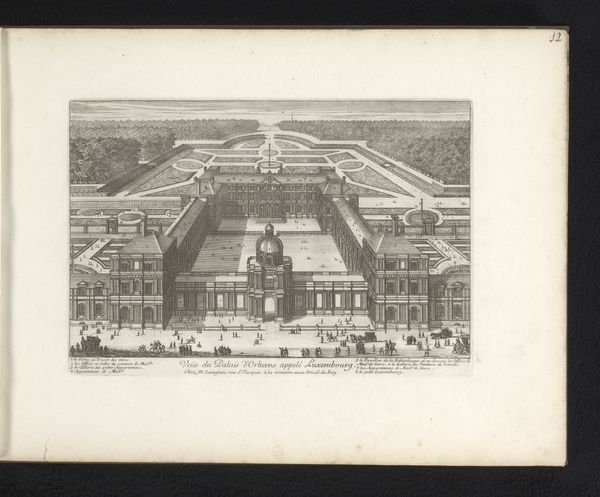
Gezicht op de keizerlijke stallen te Wenen en Spittelberg 1725 - 1738
0:00
0:00
print, etching, paper, architecture
#
baroque
#
ink paper printed
# print
#
etching
#
landscape
#
perspective
#
paper
#
cityscape
#
history-painting
#
architecture
Dimensions: height 235 mm, width 504 mm
Copyright: Rijks Museum: Open Domain
Editor: This etching by Johann August Corvinus, titled "Gezicht op de keizerlijke stallen te Wenen en Spittelberg," dates from the first half of the 18th century. It's so detailed, almost architectural in its precision. What stories do you think this urban landscape tells? Curator: More than it appears, it’s a representation of power and privilege solidified in ink. We see the imperial stables not just as a building, but as a key component of Habsburg imperial infrastructure. This cityscape reveals hierarchies of access, labor, and even the subjugation of nature through its regimented gardens. Consider how the imposing scale dwarfs the ordinary people within the print; what does that say about social mobility at the time? Editor: I see what you mean. The buildings are imposing and the grounds carefully curated, almost like a stage. How might this relate to contemporary conversations about inequality? Curator: Exactly. These meticulously rendered cityscapes served as propaganda, showcasing imperial wealth and authority while often masking social realities such as poverty and displacement. Understanding these power dynamics as they were visually encoded back then provides us with essential context to better analyse power structures visible today. In what ways are representations of power displayed today, visually or architecturally? Editor: So, it is essential to question whose perspective we're seeing and who benefits from that depiction. Thinking critically about art historical context helps to illuminate modern structures. Curator: Precisely. By decoding these visual languages of power in historical artworks, we can arm ourselves with analytical tools necessary to unpack today’s social disparities. This extends from art all the way to societal governance. Editor: That's given me so much to consider. Thank you! Curator: My pleasure! It has been rewarding connecting this work with relevant discourse.
Comments
No comments
Be the first to comment and join the conversation on the ultimate creative platform.
